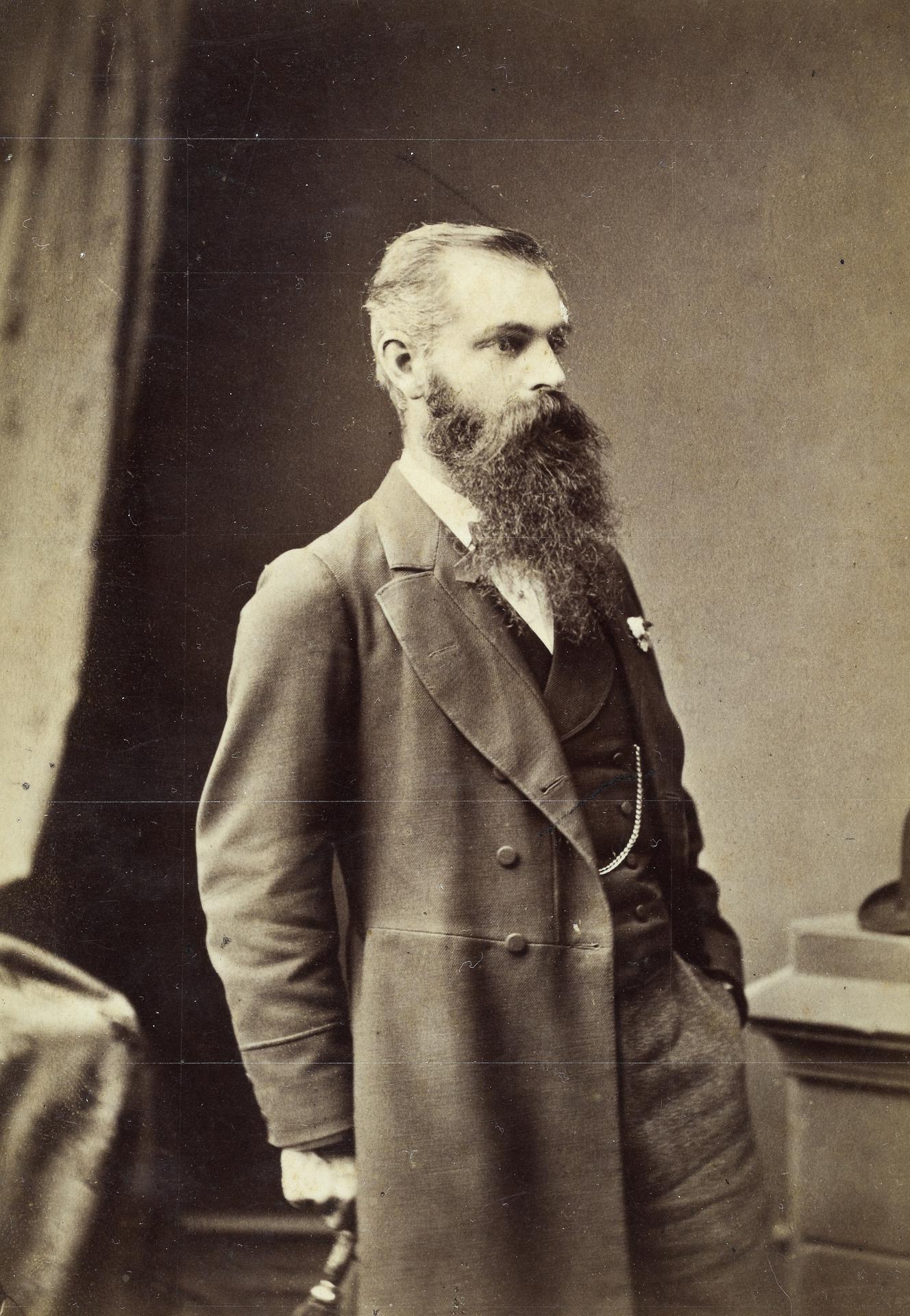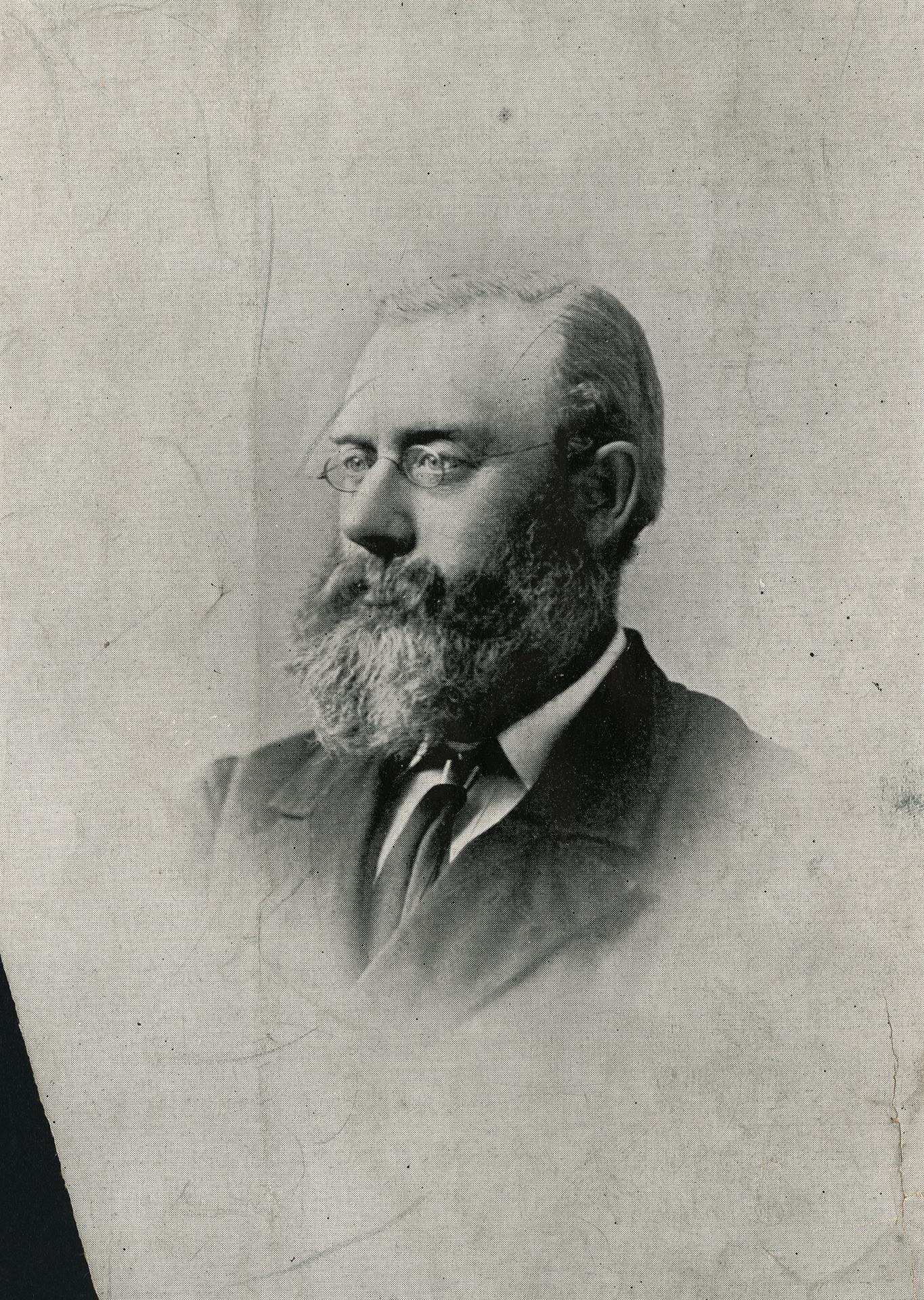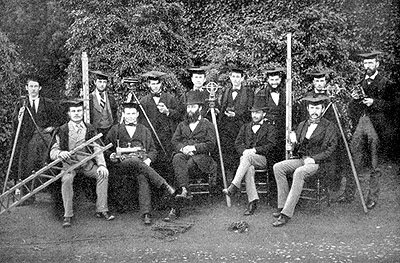Key 14: Engineering 1861; 1882; 1889
In 1861 a three year course leading to a Certificate in Civil Engineering and Surveying was introduced under the applied mathematician, Professor Wilson. The one subject not available in the existing Arts course, Practical Mechanics, was taught first by a practising surveyor, James Griffiths BA of Trinity College, Dublin and later, Henry Martyn Andrew - who would become the University’s first professor of Physics in 1882.

[Source: University of Melbourne Archives Image Catalogue, UMA-I-1087]

[Source: University of Melbourne Archives Image Catalogue, UMA-I-1240]
The course was neither as popular nor as successful as Wilson hoped, except perhaps in that, of the first two students to enrol, one was H. M. Andrew (above) and the other, William Charles Kernot (1845-1909), after a period as full-time lecturer in Engineering from 1875 was appointed the foundation Professor of Engineering when a degree course became available in 1882/3. As such he was the first graduate of the University to obtain a chair.
From the time of his initial appointment in 1868 as part-time lecturer, Kernot modified and developed the certificate course so as to pave the way for a degree course in Civil Engineering. The gift in 1870 of £1000 by Lauchlan Mackinnon and Edward Wilson, proprietors of The Argus, to fund an Engineering scholarship and the addition of subjects relating to mining, metallurgy and the law affecting mining and contracts were encouraging at a time when the number of suitably prepared students was gradually increasing.

[Source: University of Melbourne Archives Image Catalogue, UMA-I-1233]
The degree of Master of Engineering by examination was made available to holders of the Certificate of Engineering and Kernot himself took this degree in 1898. The Faculty of Engineering was formally constituted in 1889 and in the same year the Engineering Students' Society was founded.
Further degree courses in mining engineering (1901) and mechanical engineering before his death in 1909, while a course in electrical engineering, a cherished ambition of a man who with James Service and F. Pirani through the New Australian Electricity Co introduced electric light to Melbourne, was available from 1912.
Kernot’s contribution to the development of the faculty, the University and to engineering in the wider community was immense. He contributed generously to the School from his own funds including scholarships in physics, chemistry and geology and towards a metallurgical laboratory. Only the losses he suffered in the Depression of the 1890s prevented his providing a substantial contribution towards a building for the faculty.